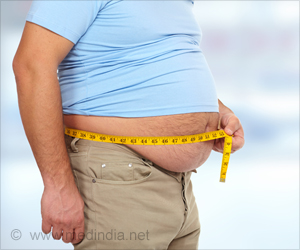Experiments on mice have led to the identification of stem cells that can produce fat, say researchers.
Experiments on mice have led to the identification of stem cells that can produce fat, say researchers.
Experts at The Rockefeller University in New York say that though they have yet to determine that the cells can renew themselves, transplants of the progenitor cells isolated from the fat tissue of normal mice can restore normal fat tissue in animals that are otherwise lacking it.Published in the journal Cell, the new findings may yield insight into the causes of obesity, a condition characterized by an increase in both the size and number of fat cells.
"In obesity, there is an increase in fat cell number. The question is: what are the events that lead to that increase? You need to know how fat cell number is normally regulated to know what goes wrong in obesity. Identifying fat cell precursors is a first step toward understanding this process," said Matthew Rodeheffer of The Rockefeller University.
Research leader Jeffrey Friedman said that cells capable of differentiating into fat were discovered in previous studied too, but their ability form fat in living animals was found to be very limited.
He claimed that his team was the first to remove fat tissue from mice, and treat it with an enzyme that broke it down into individual cells.
Rodeheffer revealed that the research team isolated such cells as bore proteins that are known to identify other types of stem cells, and that two of the cell populations could produce fat in lab dishes.
Advertisement
During the study, the researchers injected the progenitor cells into the residual fat tissue of mice with a condition known as lipodystrophy, who were unable to produce fat normally and were diabetic.
Advertisement
Rodeheffer believes that humans are also likely to have analogous cells, which may be used in the same manner to treat people with lipodystrophy.
According to him, the research team is also studying whether the cells left over after the removal of fat cells from fat tissue can be used for regenerating heart and other tissues.
"Fat is an attractive source for adult stem cells because it is readily available and easy to obtain via liposuction. You can imagine plenty of people would be willing donors," he said.
"We need to understand what controls the proliferation of fat cell precursors as a prelude to understanding how the number of fat cells increases during the development of obesity," he added.
Source-ANI
SRM















